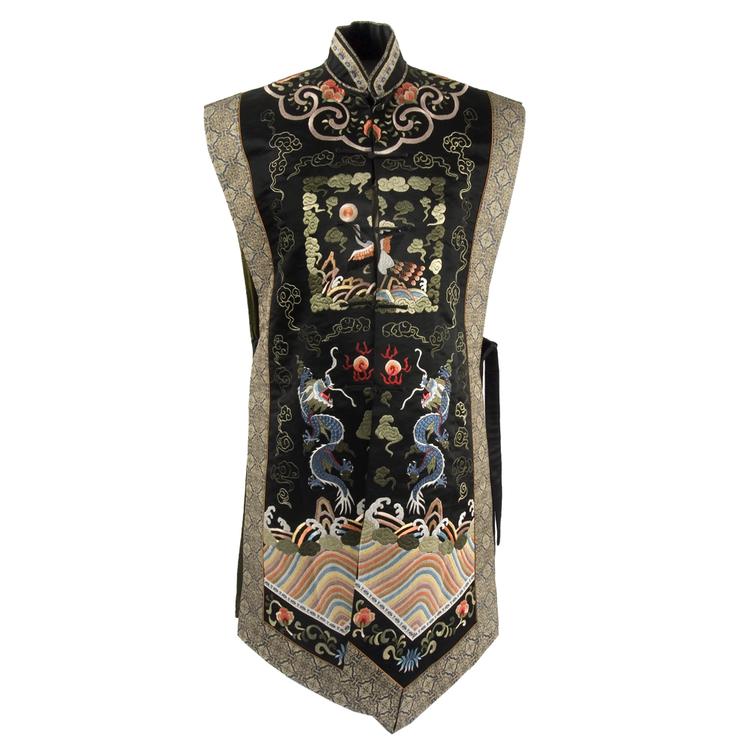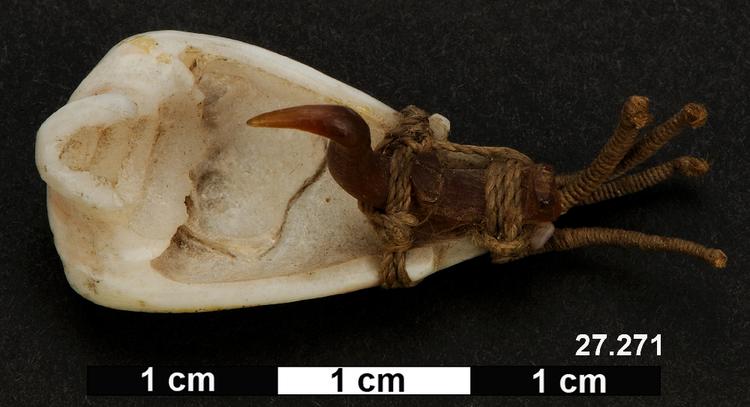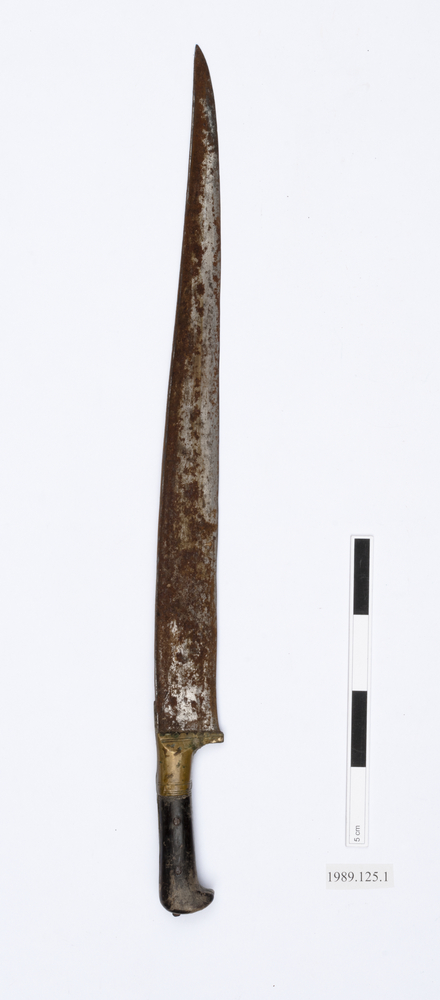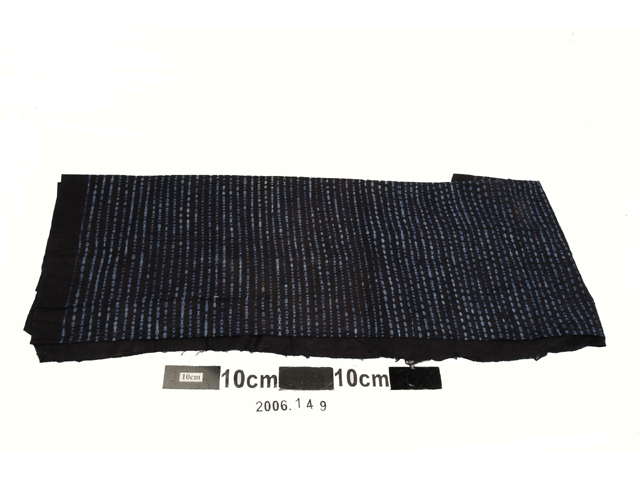
Sleeveless black silk with ties at sides, embroidered with dragons, sea and mountains. The clouds surrounding the edge are 'blessings for luck'. The mountains and sea represent the territory of the empire and a blessing for its continuity.
In the Qing Dynasty of China, clothing was used to represent social status, seperating the Bannerman and the Civilians. This style of robe with embroidered dragons got their name during the Qing dynasty and became part of the official attire worn exclusively by the emperor. The robe has two dragons in the rising position with five finger claws which only the emperor could wear. It was acceptable for other memebers such as kings, dukes and Bannerman to wear a dragon with four or three fingers, with permission from the emperor. The square shape in the chest is called as Sabirgi (Chinese: Buzi), which refers to a Mandarin square, or a rank badge. Mandarin's rank goes from Ninth (the lowest) to First (the highest). The image in this square is a peafowl which refers to a Third Rank badge. Both Bannerman and civilian could be a mandarin if they fit the requirement.
The textile is a copy, mixing different costumes of the Manchurian-Qing Dynasty of China. The collar and buttons are in a traditional Manchus design (but not the tailoring). Behind the collar is a pattern commonly found in Hanfu (chinese clothing) or Hakka clothing. The parallel pattern along the edge of the design is common for East Asian dress, interior design for walls and floors, and architectural decoration.
It is worn as a decorative item of clothing and to show the wearer’s status. How is it used? Traditionally, Chinese clothes represented your social status. The upper classes tended to wear long robes and peasants generally wore jackets and trousers. This is of course no longer the case. This jacket is in a tabard style which slips over the head and is tied at each side at the waist. Who is it used by and why them? This jacket is a modern piece with a modern design. However it resembles and has been made using the same style of patterns found in the early style of the Zhou Dynasty Dragon robe, otherwise known as the Longpao. This style of robe with embroidered dragons got their name during the Qing dynasty and became part of the official attire worn exclusively by the emperor. It was also acceptable for members of the Imperial court and court officials to wear the dragon robe. Dragons represented the ability to adapt to change. The resemblance of this jacket to the dragon robe is due to the use of colours and embroidered images that are very symbolic. The patterns of the sun or stars represents the light of the throne, the mountains are viewed to be synonymous to the idea of stability, the dragons represent the ability to adapt to changes and the water represented purity and cleanliness. In traditional Chinese culture darker colours were favoured over lighter ones so that the main colour of ceremonial clothing tended to be dark. This was then accentuated with the colourful embroidery designs. Lighter colours were more frequently used by poorer people for their everyday clothing. The Chinese associate different colours with different seasons, Green- Spring, Red- Summer, White- Autumn, Black- Winter.
Traditionally, clothing was used to represent social status. In the Quing Dynasty of China, despite different ethnic groups living in the empire, they had a simplified classification among the Bannerman and the Civilians. The clothing of both classes were fixed. This style of robe with embroidered dragons got their name during the Qing dynasty and became part of the official attire worn exclusively by the emperor. The robe has two dragons in the rising position with five finger claws which only the emperor could wear. It was acceptable for other memebers such as kings, dukes and Bannerman to wear a dragon with four or three fingers, with permission from the emperor. The square shape in the chest is called as Sabirgi (Chinese: Buzi), which refers to a Mandarin square, or a rank badge. Mandarin's rank goes from Ninth (the lowest) to First (the highest). The image in this square is a peafowl which refers to a Third Rank badge. Both Bannermn and civilian could be a mandarin if they fit the requirement.


































































































































































































































































































































































































































































































































